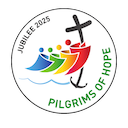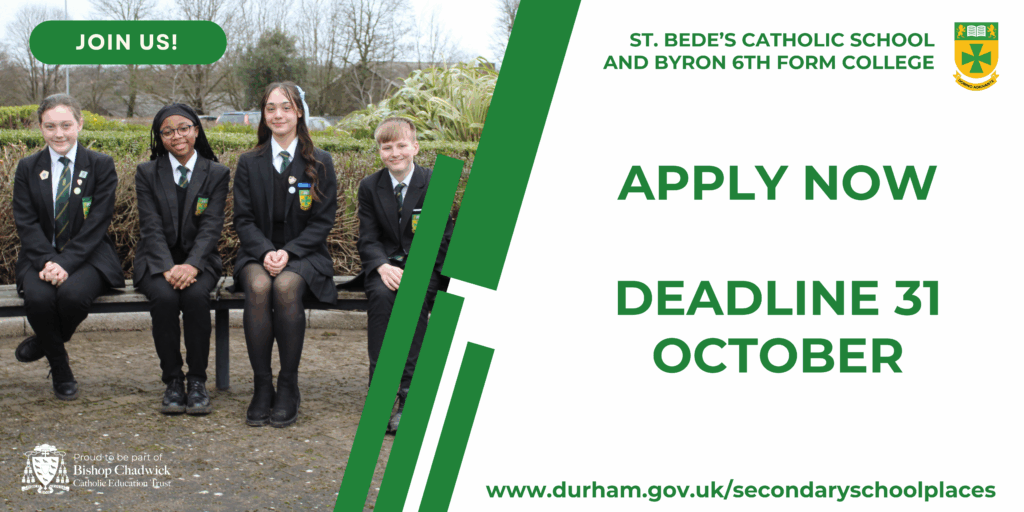In this section of the website, you will find information about the Intent, Implementation and Impact to teaching Religious Education (RE) at St Bede’s Catholic School. View our course information below:
Please click here to download the Religious Education Learning Journey The curriculum is sequenced coherently, allowing the interweaving of topics to support the acquisition of key concepts; it is compatible with the key requirements of the National Curriculum and robust collaboration between primary and secondary phases ensures progression. Curriculum components are repeated over time, ensuring all pupils practise retrieval, master skills and concepts, develop long term memory and make progress from starting points. Retrieval tasks are built into all lessons to enable pupils to remember more. The ‘Bigger Picture’ is shared with pupils, providing them with a rationale for their learning and to make links between lessons, allowing them to know more and remember more. Teachers ensure lessons provide a supportive environment for all pupils including those with SEND, removing barriers to learning and participation through adaptive planning, modelling, scaffolding, explicit instruction and metacognitive strategies. Accurate, regular assessment enables an informed and systematic judgement to be made about a pupil’s knowledge, understanding, skills and attitude. Pupils are provided with feedback and set ‘perfecting our work’ targets to close any learning gaps. Teachers provide a language-rich environment. Key tier 2 and tier 3 vocabulary is mapped out carefully across the curriculum to enable our pupils to learn the correct words and phrases in the right order. A phonics-led approach is used to improve reading and spelling. Carefully selected texts are used to foster a culture of scholarly reading. Pupils are given opportunities to consider how their learning links to future study and careers, and the importance of British Values. The curriculum is enriched to include experiences outside the classroom, such as Spirited Arts competition and homework activities. Our school chaplain visits lessons to ensure students understand how to take their curriculum experience into the Mass. Trips are organised to support the curriculum including visits to the Diocesan Youth Village. Homework tasks allow pupils to practice skills and extend their knowledge. They allow research of broader areas of the curriculum and foster a love of learning. Literacy is encouraged within the curriculum though Frayer models, word etymology, exploration of Bible stories, key tasks, extended writing, scholarly reading and homework activities. AO1 Demonstrate knowledge and understanding of religion and belief, including: AO2 Analyse and evaluate aspects of religion and belief, including their significance and influence. A01-Demonstrate knowledge and understanding of religion and belief, including: AO2 Analyse and evaluate aspects of, and approaches to, religion and belief, including their significance, influence and study. At St Bede’s our intention is for our students to: Whilst teaching at Key Stage 2 develops pupils’ understanding of religious stories, our students begin their curriculum journey by being able to retell special stories about religious events and are able to understand the impact these stories have on Christian beliefs. For example, the Nativity and how different interpretations of this impact people’s understanding of Christ and His purpose. As they develop their skills they will be able to make links between religious stories and beliefs from other areas of Christianity, for example the story of Easter linking to beliefs about life after death. They will then progress onto being able to describe and show understanding of religious sources, beliefs, ideas, feelings and experiences making links between them. Finally, they will be able to identify sources of religious belief and explain how distinctive beliefs arise, for example why some Jews observe festivals and rituals strictly whilst others do not. In Key Stage 4, students continue their curriculum journey by deepening their knowledge and understanding of the reasons why Catholics believe in God, and how this belief affects their life. As they develop their skills they are able to critically analyse how Catholics respond to non-religious challenges to their beliefs and use sources to explain divergence of belief, for example differing interpretations of the Bible. They will become religiously literate young people, who are aware of the demands of religious commitment in everyday life. Moving into Key Stage 5, students deepen their knowledge and understanding through the study of philosophical, ethical and theological issues and questions raised by religion and belief. They will do this by critical analysis of scholarly arguments regarding topics like the existence or non-existence of God, the nature and influence of religious experience and the problem of evil and suffering. They will examine issues such as whether religious teachings about God should be understood analogically or symbolically. Students will begin their curriculum journey by using religious words and phrases learnt in Key Stage 2 to describe some religious actions and symbols and like this to practice for example why Catholics pray and symbols involved in prayer. The language they use will continue to develop to give reasons for religious actions and symbols. This will eventually lead to the use of religious terms to show an understanding of different liturgies and to show how worship can impact life. Eventually students will be able to explain the meaning of a variety of forms of celebration from birth to death. For example, in Year 9 they will be able to compare and contrast baptism with Brit Milah. In Key Stage 4, students will continue their learning by using increasingly complex religious words and phrases to describe religious actions and symbols. The language they use will continue to develop to give reasons for religious actions and symbols. This leads to the use of religious terms to show an understanding of different forms of liturgy including popular piety and others which have not been studied earlier, for example pilgrimage. Students begin their learning by showing an understanding of ways in which religion is lived out by believers and building on their knowledge of this from Key Stage 2. For example, students will explore how and why Christians take care of the earth in different ways. As they develop, they then progress onto giving reasons for certain actions by believers and show understanding of how religious belief shapes life. They then progress onto showing an understanding of similarities and differences between people’s responses to moral and social issues because of their beliefs and give justifications for this. For example, they will compare and contrast literal and metaphorical interpretations of creation. Students continue their learning by using increasingly complex religious words and phrases to describe religious actions and symbols. The language they use continues to develop to give reasons for religious actions and symbols. This leads to the use of religious terms to show an understanding of different forms of liturgy, including popular piety and others which have not been studied earlier, for example pilgrimage. In Key Stage 4, students continue to deepen knowledge and understanding of how Catholic belief affects Catholic attitudes, including to marriage and relationships in the 21st Century. They critically analyse how Catholics respond in the world to non-religious challenges to their beliefs. Students begin to discern their own moral responses using Catholic teaching about topics such as contraception and homosexuality. In Key Stage 5, students critically deconstruct information concerning normative ethics, leading to insightful analysis of complex concepts, questions and controversies in ethics leading to a fully formed and well-argued account of their own and others’ views. They continue their curriculum journey by successfully applying ethical theories to contemporary theories e.g. Utilitarianism to sexual ethics. They will also be able to critically consider the diversity of ethics and practice within Christian thought, including those that shape and express religious identity, the role of the community of believers and key moral principles. For example, they will be able to consider which moral principles and moral actions are paramount in Christian life. Students will also consider developments in Christian and non-Christian thinking between society and faith including ideas such as gender and secularism.Key Stage 4
Key Stage 5
Learning Journey
Key Stage 4 assessment objectives
Key Stage 5
Progression Map
Beliefs, Teachings and Sources
Celebration and Ritual
Social and Moral Practices



